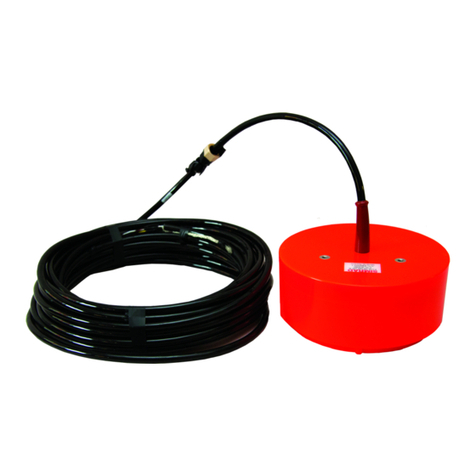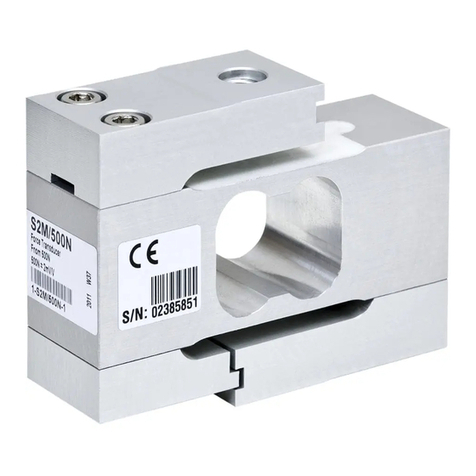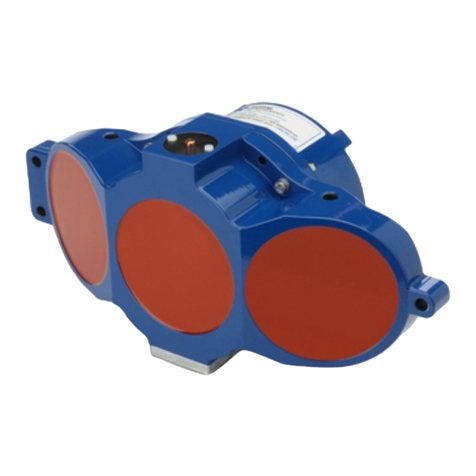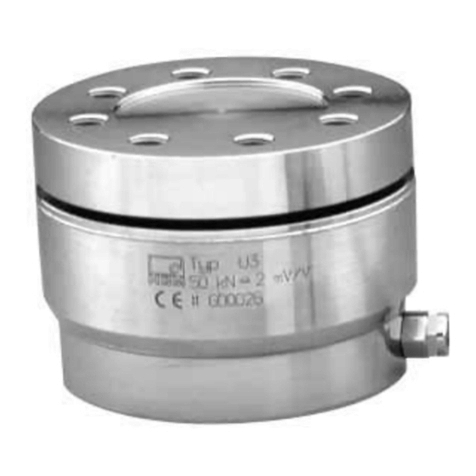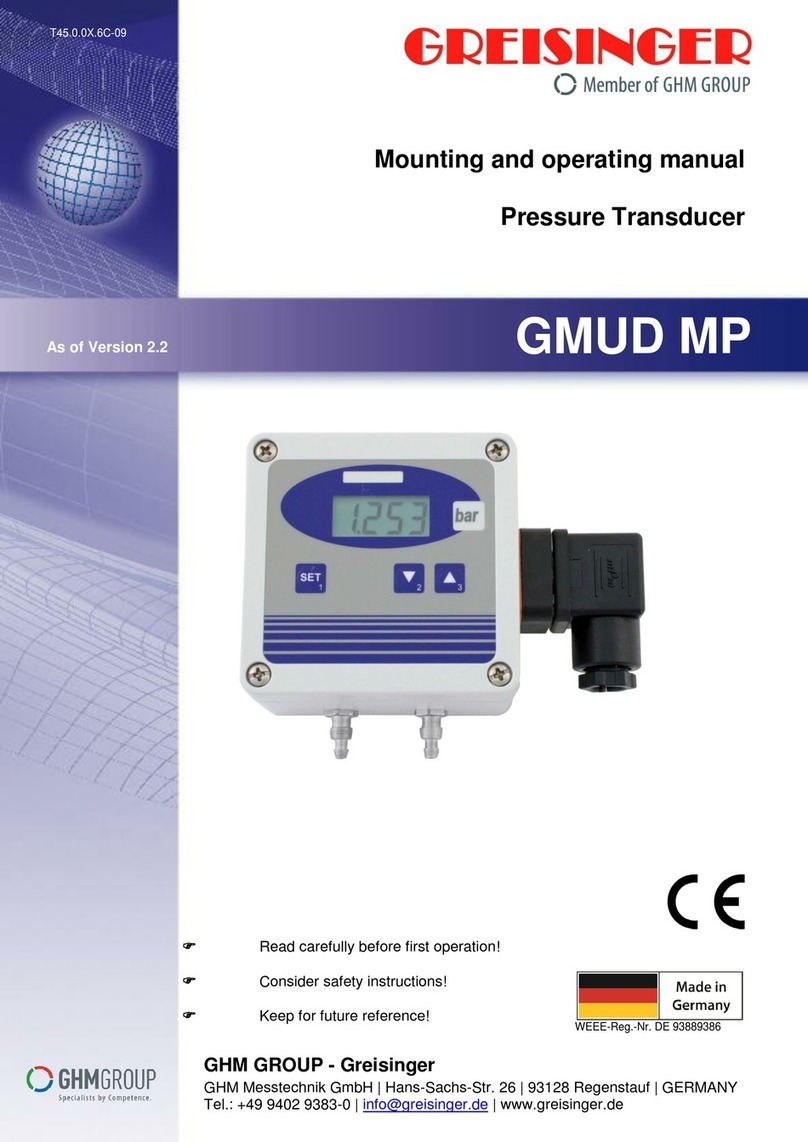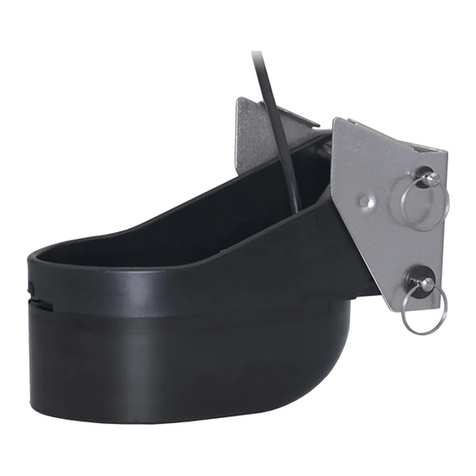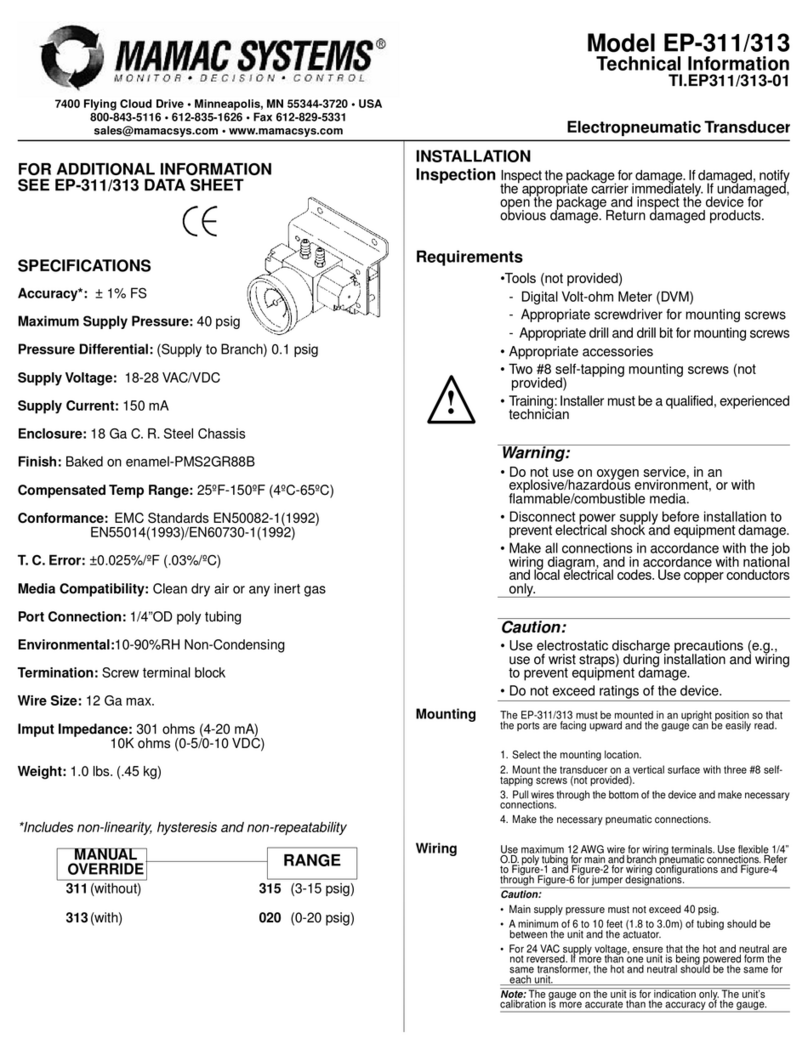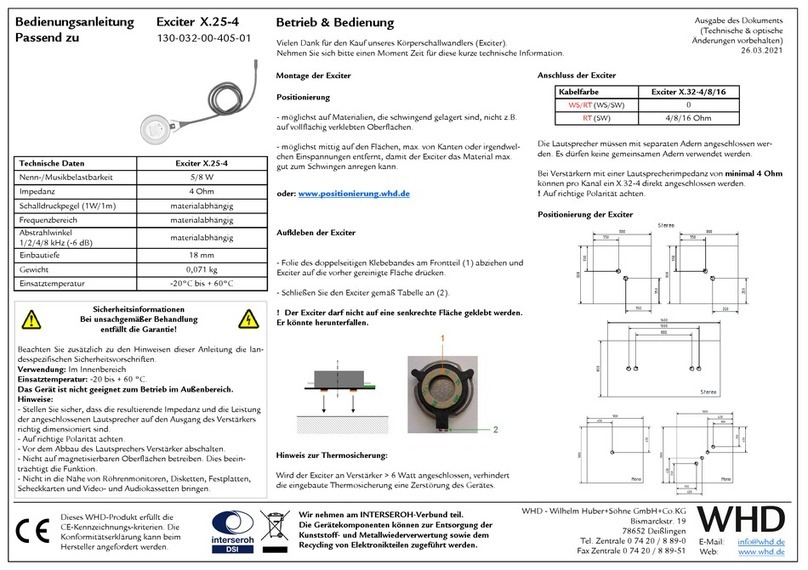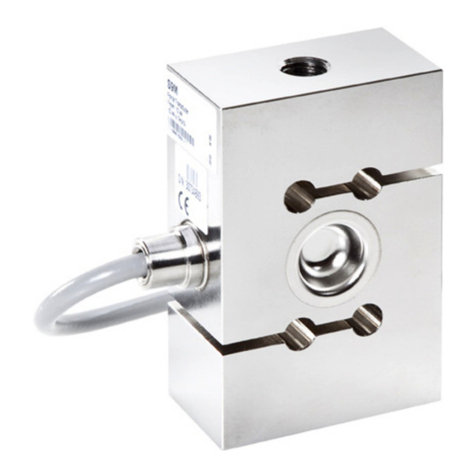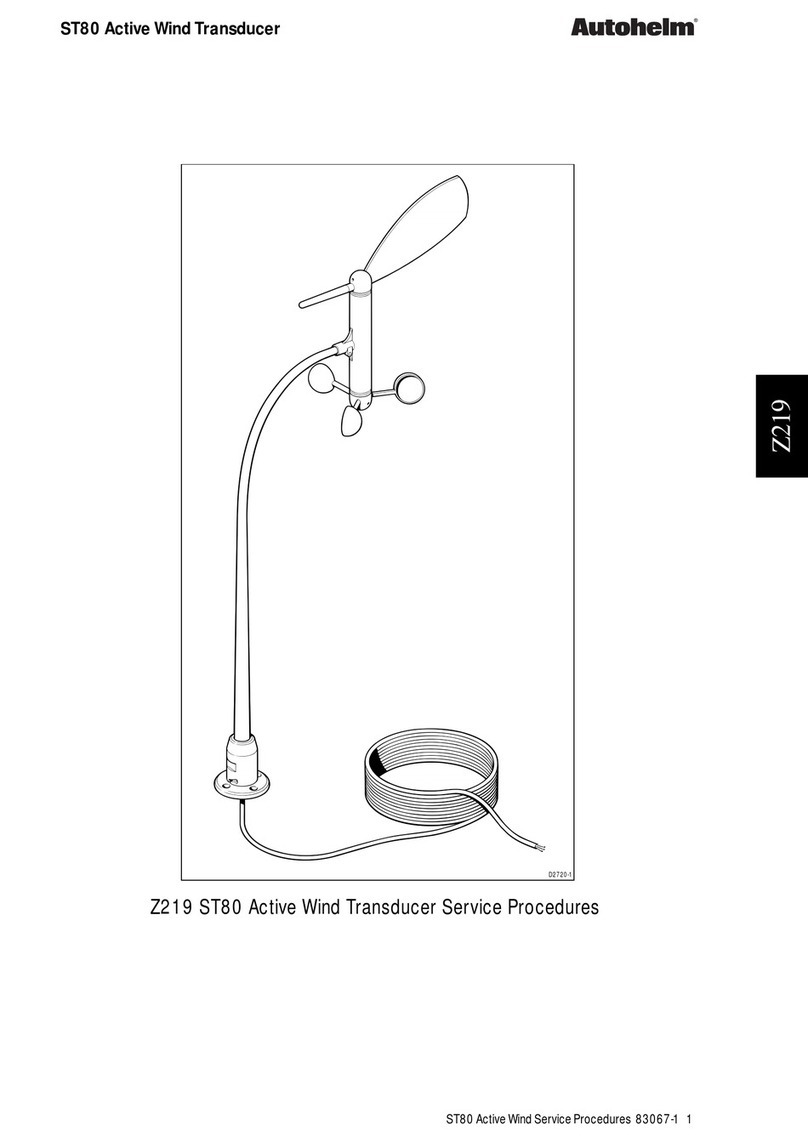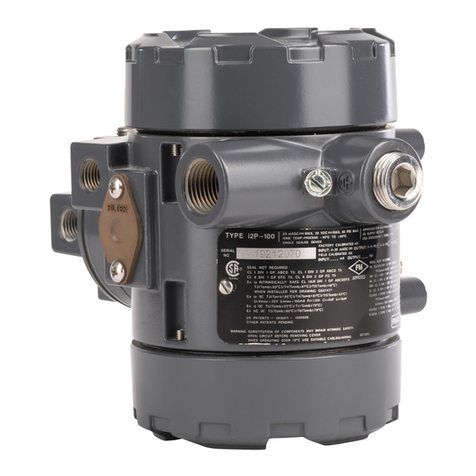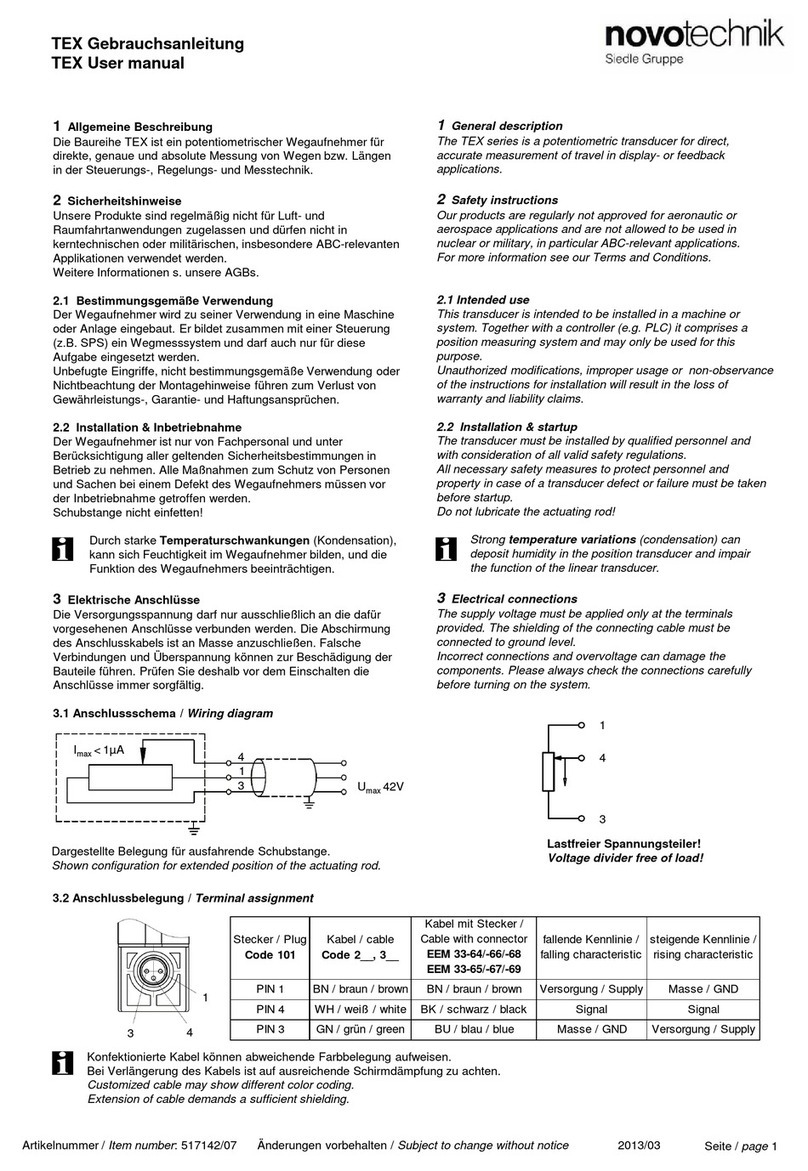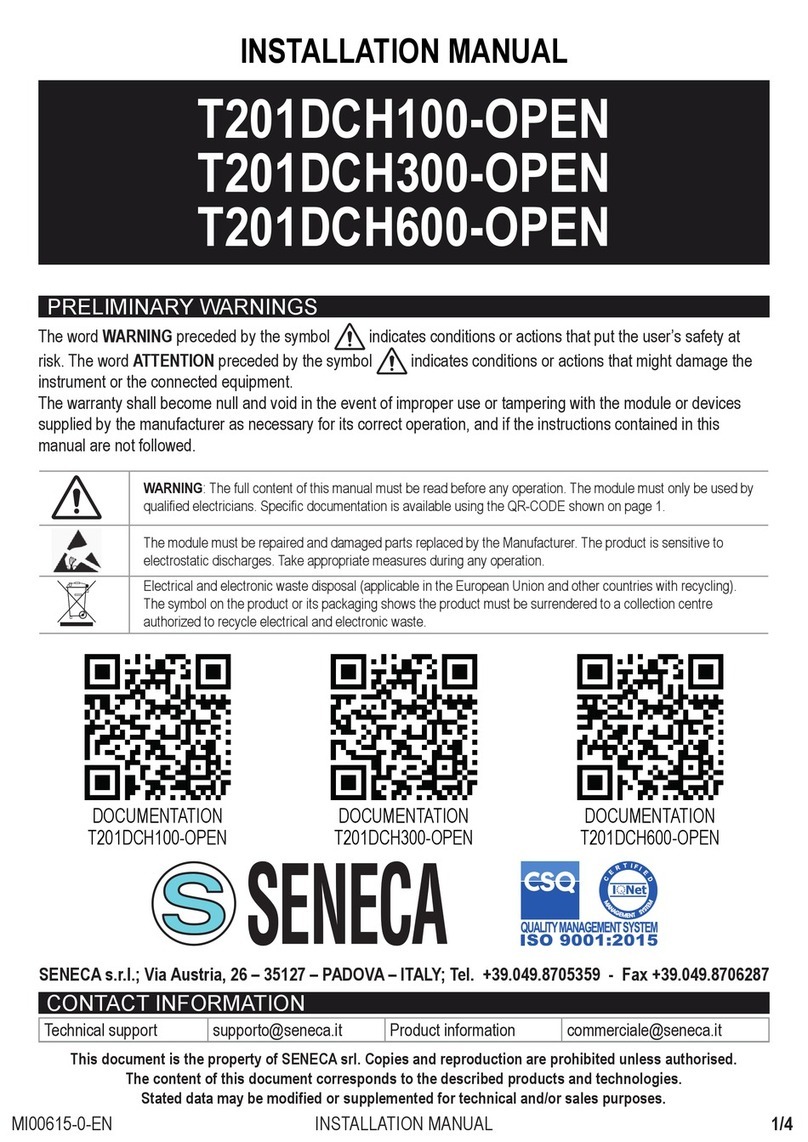Gems Sensors & Controls 4000K Series Product guide

560550-0110 Issue F Page 1 of 8
GEMS SENSORS & CONTROLS
OPERATING & INSTALLATION INSTRUCTIONS
CE MARKED SERIES 40XXX
PLEASE READ CAREFULLY BEFORE INSTALLING
PART NUMBER: 560550-0110 ISSUE: F
INTRODUCTION
Series 40XXX are fluid pressure measuring transducers in which a four active arm Wheatstone
bridge of thin film gauges, integral with a beam structure connected to a pressure summing
diaphragm, is used to convert fluid pressures into a proportional electrical signal. These
instruments are suitable for long, continuous arduous service when operated within the published
specifications.
Series 40XXX conform with the essential protection requirements of the EMC Directive
2004/108/EC amended by certified type testing to EN 61326-1 and EN 61326-2-3.
Series 40XXX with the CE0086 mark also complies with the requirements of the Pressure
Equipment Safety Regulations 2016 and can be used as part of a safety-related system on
Category IV pressure equipment.
Conformity with the requirements of the CE mark only applies when the installation
conditions described in these instructions have been met. For units supplied without a
cable assembly connection to the transducer must be accomplished using Gems Sensors
approved cable. see APPROVED CABLE section.
All instruments conform to the appropriate specifications and/or drawings applicable and have
been subjected to relevant strict quality control procedures.
HAZARDOUS PRODUCTS
The Consumer Protection Act of 1987, Section 6 of the Health and Safety at Work Act 1974 and
the Control of Substances Hazardous to Health Regulations 1988 require that we advise
recipients and users of our products of any potential hazards associated with their storage,
handling or use.
The products which our Company supplies may be classified as Electrical, Electro-Mechanical
and Electronic equipment.
These products are tested and supplied in accordance with our published specifications or
individual special requirements that are agreed in writing at time of order. They are constructed
so as not to affect adversely the safety of persons and property when properly installed,
maintained and used by qualified personnel, in the applications for which they were designed and
manufactured

560550-0110 Issue F Page 2 of 8
ACTION ON RECEIPT
* Check details on Calibration Certificate agree with data etched on transducer body.
* Check accessories supplied include:
Calibration Certificate (or QA Certificate)
Seal, Dowty Bonded
Mating Connector (where applicable)
GENERAL
* Transducer should not be subjected to greater than the maximum allowable pressure
(P.S.)
/ Temperature (T.S) as defined on the transducer label.
* Transducer should not be subjected to mechanical impact.
* In the event of fire the end user must ensure that the system pressure is vented to a safe
area.
* The effects of decomposition of unstable fluids should be considered by the user when
placing this device in service.
* The pressure transducer has no means of draining or venting, this must be performed by
another component in the end users system.
* Pressure range must be compatible with the maximum pressure being measured.
* Pressure media must be compatible with the transducer wetted parts which are:-
Ranges 1 and 1.6 bar, 15 and 30 psi : 15-7 Mo plus 17-4 PH stainless steels
Ranges 2.5 bar and 60 psi and above : 17-4 PH stainless steel
Pressure connection codes K or L : Inconel alloy 625
* Exposed end of cable must be kept free from moisture.
* Liquid must not be allowed to freeze in the pressure port.
Full specifications for all products available on request from our Service Department.
MECHANICAL INSTALLATION
Pressure Connections: G¼ internal pressure connection to BS2779 as standard. Alternative
fitted as specified at time of order.
Pressure couplings screwed into G¼ pressure ports should have a maximum thread engagement
13 mm and UNDER NO CIRCUMSTANCES be allowed to touch the pressure sensitive
diaphragm. Pressure couplings should be sealed against the outer face at the pressure port entry
using bonded seal washer such as:-
Part Number Description
234646-0002 G¼ bonded seal up to +100°C operation.
Dowty Ref: 400-021-4490-02
499207-0002 G¼ bonded seal up to +200°C operation.
Dowty Ref: 300-021-0967-02

560550-0110 Issue F Page 3 of 8
499207-0006 G1/8 bonded seal up to +200°C operation.
Dowty Ref: 300-020-0967-02
Refer to Dowty for external pressure ratings.
Mounting: Pressure Transducer is designed to be attached by the coupling thread only. Omni-
directional. To fit, use a 22.2 mm (7/8 inch) AF spanner on the hexagon provided and apply
maximum torque of 27 Nm (20 lbf-ft). The Customer must ensure that the pressure seal is
suitable for the application. If in doubt contact Gems Sensors.
Vibration: Where present, mount in a saddle clamp such as part number 499877-1000 (material:
Polypropylene) or 499877-1001 (material: Polyamide). Position the clamp as close to the
pressure port as practicable.
Effects of Heat: Avoid mounting the transducer near a source of heat which is liable to create a
temperature gradient across the instrument. If this is unavoidable, use a heat shield to deflect
uneven radiated heat or wrap the transducer in glass fibre insulation so that an even temperature
is assumed throughout.
High Temperature Pressure Measurement: Possible using a length of piping or a "syphon" to
isolate the instrument from the hot media. Since there is no flow, the temperature drop along the
tubing is considerable and usually a relatively short length is sufficient to bring the pressure
media temperature within acceptable limits for the instrument. Alternatively a temperature
isolator, part number 558564-0001, can be fitted (G¼ connection only). Pressure media must not
be allowed to solidify in the tube and/or pressure port.
ELECTRICAL INSTALLATION
All types include suppression devices providing transient protection to EN 613261-1 and
EN 613261-2-3.
For all types conformity with the requirements of the CE mark only applies when
connection is made with Gems Sensors approved cable, See APPROVED CABLE section,
and the screen of that cable is connected to a reliable earthing point at the instrumentation
end.
Types 40XXX-XX-M/P2-X: These types are capable of being immersed to a maximum depth of
200m WG.
Types 40XXX-XX-M2/PN-X: To combat the effects of lightning strike these types are fitted
with suppression devices providing surge immunity to IEC 801 Part 5. To protect the ‘receiving’
equipment it is recommended the end user fits a Lightning Protection Unit (LPU) at the
instrumentation end close to the point of cable entry into the building, installed as recommended
by the LPU manufacturer, to protect against the likely high current surge resulting from lightning
strikes.

560550-0110 Issue F Page 4 of 8
Types 40XXX-XX-M2-U: These types are supplied with colour-coded flying leads and are
intended for users/suppliers wishing to hold stocks of pressure ranges to which various lengths of
cable can be fitted. Connection MUST be made via Gems Sensors cable assembly part number
560509; available in lengths from 0.5 to 150 metres at time of order.
Types 40XXX-XX-D2-X: These types employ a weatherproof (IP66 rated) cable assembly.
Types 40XXX-XX-C2-X: These types are fitted with a MIL-C size 10, 6 pin receptacle. The
free mating socket (not supplied) must conform to MIL-C-00264872.
APPROVED CABLES
Gems Sensors uses cable comprising 6 colour-coded cores, with a central vent tube, enclosed by
an aluminium/polyester screen where the screen is in intimate contact with a separate drain wire.
The outer sheath can be of various material, depending upon application and operating
temperature, e.g. Exar (non-immersible, +150°C max), PTFE (non-immersible, +200°C max),
Polyurethane (immersible, +70°C).
OPERATION
Having installed the transducers as instructed they are ready for use. The transducer should not
be removed whilst the system is at pressure.Before applying power, check that the correct
polarity and excitation levels are being applied. See ELECTRICAL REQUIREMENTS.
Compensated Temperature Range
a) Types 40XXX-XX-C2-X -54°C to +120°C
b) Types 40XXX-XX-D2-X -54°C to +120°C
c) Types 40XXX-XX-M2-X -20°C to +50°C
d) Types 40XXX-XX-P2-X -20°C to +50°C
Operable Temperature Range
a) Types 40XXX-XX-C2-X -54°C to +135°C
b) Types 40XXX-XX-D2-X -54°C to +120°C continuous
-54°C to +135°C peak
c) Types 40XXX-XX-M2-X -20°C to +50°C
d) Types 40XXX-XX-P2-X -20°C to +50°C
OPERATIONAL LIFE:
Limited to 100M cycles to maximum allowable pressure.
CALIBRATION
Transducers are calibrated to the datum requested at time of order; this can be identified by the
fifth entry in the stock numbering code as follows:-
G- gauge datum vented to atmosphere via the electrical connection
A- absolute datum

560550-0110 Issue F Page 5 of 8
S- sealed reference; reference side of the instrument is sealed and the output
electrically adjusted to zero with 1013 mb applied to pressure port
U- uni-directional differential
B- bi-directional differential
CHARACTERISTICS
Millivolt Output Transducers: All millivolt (mV) output transducers should be used with a
stabilised d.c. excitation supply. Output errors directly proportional to supply instability.
Specifications are given with 10V d.c. excitation. However, a lower supply may be used with a
corresponding decrease in output.
There are no adjustments for zero and span on the transducer. If local provision is required, the
circuit diagram below may be employed. 12V d.c. stabilised supply is used instead of standard
10V to allow span adjustment to be obtained.
MAINTENANCE
Routine Inspection: Not required except for periodic inspection of the cable and moulding to
ensure that these are neither damaged nor softened by incompatible liquid.
If Malfunction Occurs: Isolate the free end of the cable and measure the input and output
resistance. If vastly different from specification, either lower or higher, the strain gauge is
damaged and the instrument will have to be replaced.
If the reading is satisfactory but the operation is still suspect, join the input and output conductors
together. Using a low voltage insulation tester, measure the insulation resistance between the
conductors and the case; the reading should be 100 Mohms or greater.
On NO ACCOUNT use a high voltage "Megger" type of insulation tester or any device which
generates more than 50V d.c. for this test.
Causes of Failure: Excess pressure of more than twice the rated range (1.5 times rated range for
Inconel "wetted parts" versions). A short duration pressure cycle having such a peak value may
be sufficient to damage the strain gauge.

560550-0110 Issue F Page 6 of 8
The instrument may withstand some excess pressure without failure, but a change in residual
output may result. If this is not excessive the instrument may be re-zeroed externally, although
other changes in characteristics might occur which can only be determined by total re-calibration.
Failure can also occur if the system is driven into resonance by a fast pressure pulse, even though
the pulse peak is within the nominal pressure range. System resonance is sometimes referred to
as "water hammer" and is typically the result of valve slam or bounce, causing a shock wave
through the system.
If it is suspected that adverse transient pressure pulses are present for any reason, then fit a
restrictor such as our part number 466175-0000 (depending upon pressure adaptor).
CAUTION
CARE MUST BE TAKEN NOT TO TOUCH THE PRESSURE SENSITIVE
DIAPHRAGM WHILST CLEANING THE PRESSURE PORT. FAILURE TO OBSERVE
THIS PRECAUTION CAN CAUSE IRREPARABLE DAMAGE.
WARRANTY
The Company warrants its products to be free from defects in material and workmanship in
normal use and service for a period of one year from date of shipment. The Company reserves
the right and option to refund the purchase price in lieu of repair or replacement upon evaluation
of the returned original part. Modification, misuse, attempted repair by others, improper
installation or operation shall render this guarantee null and void. The Company makes no
warranty of merchantability or fitness for a part or purpose.
SERVICING
The transducer cannot be repaired locally and if damaged should be returned to ourselves at the
address shown below or to accredited dealers when a replacement/repair is required:
Gems Sensors & Controls Gems Sensors Inc
Lennox Road 1 Cowles Road
Basingstoke Plainville, CT 06062
Hants. RG22 4AW U.S.A.
RETURN TO FACTORY
PLEASE NOTE: To comply with Health and Safety requirements, the instrument must be clean
and safe to handle and accompanied by a formal statement to that effect duly signed by an
authorised officer of the Company.
Any instrument returned without certification will be quarantined and no action will occur until
cleared. It may ultimately be returned to you and subject to a transportation charge.

560550-0110 Issue F Page 7 of 8
W A R N I N G
* IF INSTRUMENT IS SUBJECTED TO +400°C PLUS
Some instruments use Viton sealant. Above +400°C this material decomposes
producing (amongst others) Hydrofluoric Acid which is extremely corrosive
* DO NOT ALLOW CONTACT WITH SKIN
If it is suspected that an instrument has been subjected to temperatures in
excess of +400°C
* CONTACT OUR SALES OR SERVICE DEPARTMENT TO
ASCERTAIN IF THE INSTRUMENT CONTAINS VITON
W A R N I N G
ELECTRICAL REQUIREMENTS
SUPPLY VOLTS
TYPE
MAX
RATED
OUTPUT +ve
SUPPLY -ve
SUPPLY +ve
OUTPUT -ve
OUTPUT CASE
EARTH
40XXX-XX-C2-X
Pin A
Pin D/E
Pin B
Pin C/F
40XXX-XX-D2-X
15V
d.c. 10V
d.c. 0-30mV
at rated
supply
Red
White
Yellow
Blue
Screen
40XXX-XX-M2-X
40XXX-XX-P2-X
Red
White
Yellow
Blue
Screen
40XXX-XX-MN-
X
40XXX-XX-PN-X
Red /
Orange
White /
Green
Yellow
Blue
Screen

560550-0110 Issue F Page 8 of 8
This manual suits for next models
1
Table of contents
